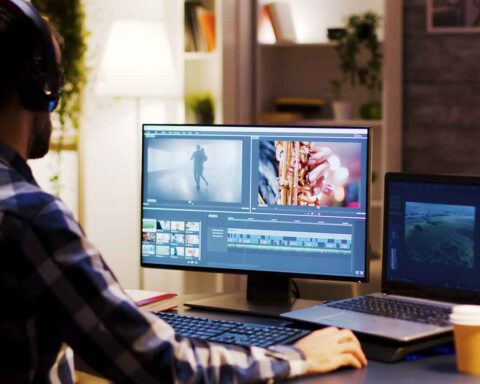Cash flow is the most important aspect of running a business. Whether your company is big or small, cash flow is everything. You need money to survive another day. In my experience, 9 out of 10 companies that failed did so because they added too many unavoidable costs that ate through their cash.
It’s a simple equation: Without cash, any business becomes insolvent. You may have millions of dollars of receivables or orders, but if you don’t have the cash on hand to collect those receivable or to execute on those orders, your business will fail.
Now, there are some businesses that don’t have to worry about cash flow too much. A subscription box company, for example, gets paid before they have to buy and deliver the product. They know exactly how many orders need to be filled long before they ship anything. If they understand their margins well, they should never have a cash flow problem.
But the movie business is not like that. Yes, we can sell the final product an infinite number of times (which is why this is such a desirable business), but content production is a front-loaded capital-intensive process. We can make estimates, but ultimately we don’t know exactly how many tickets we’ll sell or how many views we will get.
This isn’t to say we don’t know where any of our sales come from. You need some distribution deals (pre-sales) in place before you begin production. I never advocate making a product without knowing who’s going to buy it, otherwise you’re creating a business without a customer. That’s not a strategy. That’s gambling.
Even worse, productions don’t receive their budgets upfront. They get pieces of the budget (usually in quarters or fifths) throughout the process. The last portion comes on final delivery.
Do you see the challenge? You don’t get the full budget to make the movie until after you deliver the movie. This means every production has a cash flow problem from dollar one AND minute one. In TV, this gap might last 120 days. In feature films, it could last six or nine months.
The 3 Critical Cash Flow Documents

In terms of practicalities, there are three critical documents you need to manage the cash flow of a content business: a budget, a cash flow projection, and a lending schedule. You’ll want to create a set of these documents for each project and for the business as a whole. Project cash flow documents should inform the parent company’s long-term strategy and cash needs.
1. The Budget
Obviously every project requires a budget. We budget everything down to the granular level. When I look at a budget, I want to know how every penny will be spent. On a million dollar movie, the budget won’t be shorter than 20 pages. I’ve seen budgets on $200 million movies extend past 100 pages. We track everything. For instance, we want to know the exact number of people we’ll hire, how much they’ll be paid, and how many hours they’ll work (including overtime and fringe costs like state and federal taxes, benefits, and union pension/health).
2. The Cash Flow Projection
From the budget comes the cash flow projection (like I mentioned earlier).
When you produce a set of financial documents from the average accounting software, you typically get: a balance sheet, an income statement (PNL), and a cash flow statement. You would think the cash flow statement would be enough to manage your cash flow, but this document isn’t very useful in our business.
You see, the cash flow statement reports a lot of information about what happened in the past. It shows you what your cash flow WAS over a given period of time, but it doesn’t help you make future decisions. Frankly, you could glean the same information by simply looking at your bank balance at the end of every day or every week. You should still create this document, because it’s good to look back and view what you did right and what you did wrong, but it doesn’t help you manage future cash flow needs.
What do you need to make good decisions? A cash flow projection. This is where we plot money coming in and where it goes out, on a weekly basis, over time. We keep a running balance to make sure every week stays positive. Your projection tells you how long money will last and when/if you’ll go negative. You can use this information to make decisions to protect your cash position. For example, if you anticipate a week where you won’t have enough money to pay your bills, you can secure a bridge loan to cover the gap.
In entertainment, income is limited to the financing schedule set by your financier so we have a pretty good idea of when it comes in (though there may be a 2-3 week delay for each payment that we must account for). And since we budget well, we have a pretty good idea how we’ll spend money.
This means we can accurately identify any points where our cash balance falls negative, meaning our spending outstripped our income. In these cases, we need to take steps to find a solution with a lender.
3. The Lending Schedule
From the cash flow projection comes the lending schedule. This document shows where we’ll borrow money to cover our cash flow gaps, how much that money will cost, and when we’ll pay it back.
In most cases, you’ll need some loans to cover unavoidable gaps in your financing. There are lots of ways to raise money, but you’ll have to speak to a lender of some kind. The lender will want to know and review your tax incentive estimates and distribution agreements. And we’re not talking about an ordinary retail bank. There are specialty entertainment banks who deal with exactly this kind of thing.
Once we’ve secured financing through a bank to cover these gaps, we update our cash flow projections with the new loans as income. If we did our jobs right (and the bank makes sure we do), all the gaps should be covered and our projection will show a positive cash flow throughout the production.
Keep in mind that everything we do to create these documents start with estimates. For instance, just because a contract says that you’ll get paid how much and when, it doesn’t mean you actually will. There are always delays that we need to account for.
It’s absolutely critical that you present these documents in a clear way for lenders and your investors (whether a studio or private equity) to understand. What is a bank looking for? What will they find confusing? This is why it’s important to have someone on your team with experience in these matters so they can help you plan appropriately and create safe margins of error.
Key Takeaway
As an entrepreneur in the content business, my best advice is to keep costs as low as possible for as long as possible. You need a clear and reasonable financing plan (not pie-in-the-sky bullshit) that plots what your cash flow will be in the future.
Furthermore, be mindful about inviting a bank or an investor into your business. Once you step off that ledge, you’ll spend a lot of time and money managing that relationship. Over the last 15 years, I’ve been that guy for my clients, interfacing with lenders and physical production. It’s not impossible, but it takes experience and time, which is why I always recommend hiring someone who already has the experience.






